Unraveling the Mystery of the Einstein Cross Phenomenon
Written on
Chapter 1: Understanding the Einstein Cross
The term "Einstein Cross" frequently arises in discussions surrounding the theory of relativity and various cosmic events. However, many people remain puzzled about what exactly this phenomenon entails and its origins.
Upon examining the accompanying image, one might mistakenly believe that the galaxy shown possesses four distinct cores. In truth, what you're observing is the quasar Q2237+0305. Its light is bent as it traverses the core of the galaxy ZW2237+030 due to an effect known as “gravitational lensing,” resulting in multiple visual representations of the quasar. But what does gravitational lensing entail? Let’s explore this concept further.
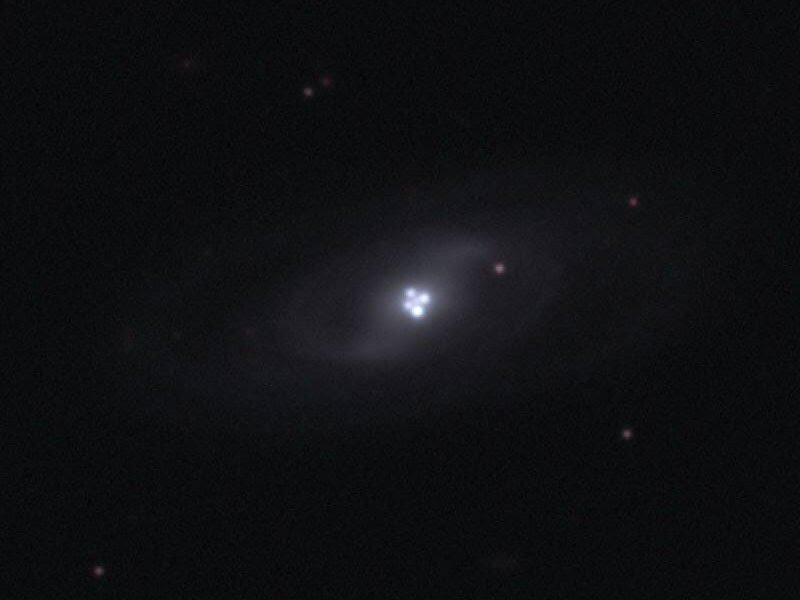
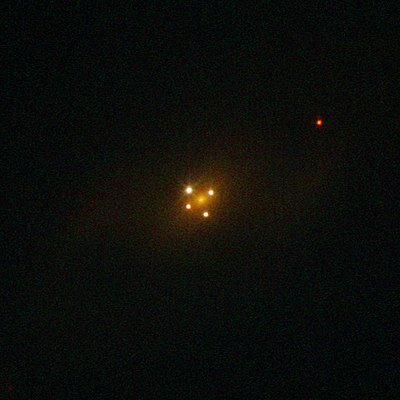
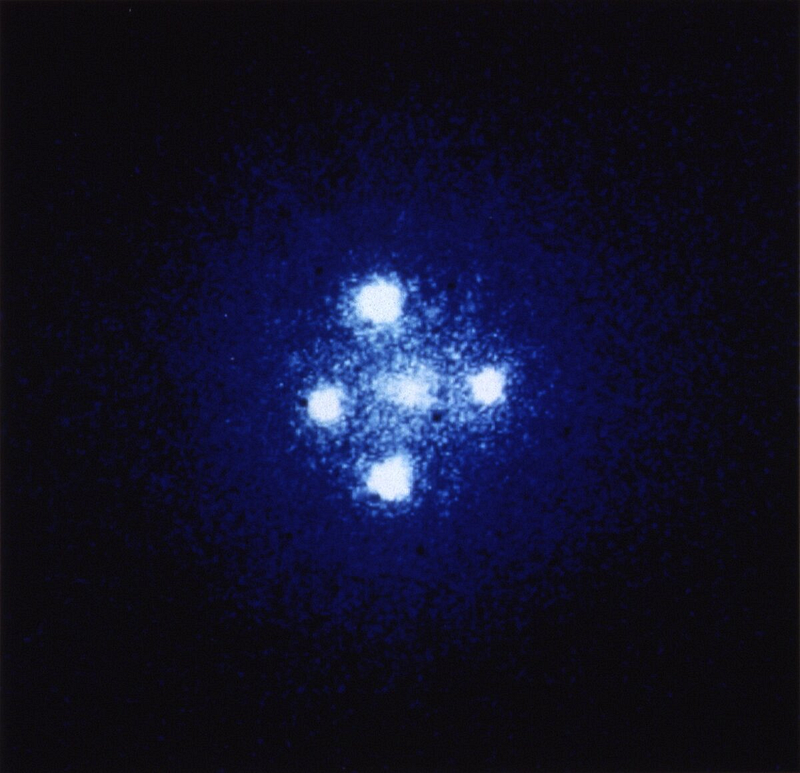
Where Does the Curvature Originate?
Einstein's general theory of relativity offers a contemporary interpretation of gravity. Instead of viewing gravitational attraction as a simple force, Einstein described it as the result of the curvature in space-time. The essence of this theory is the existence of an additional dimension that remains imperceptible to us. Any mass-bearing object, like Earth, distorts space-time around it, causing a curvature in this unseen dimension.
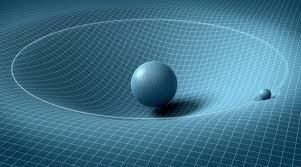
Consequently, celestial bodies navigate along their orbits around a common center of mass not due to gravitational pull, but because these paths represent geodesic lines—the closest equivalents to straight lines within curved space. A geodesic line is defined as the shortest distance between two points in a multi-dimensional realm.
Gravitational Lensing Explained
Classical Newtonian gravity posits that gravity does not influence light, as photons are massless. However, a vital prediction of Einstein's theory asserts that light will trace a curved trajectory near massive objects, thus being affected by gravity. One of the confirmations of this theory comes from observing the position of a star near the Sun's edge. If light indeed follows a curved route close to the Sun, this will manifest as a shift in the star's apparent position—an effect that has been confirmed by observations, aligning perfectly with theoretical predictions.
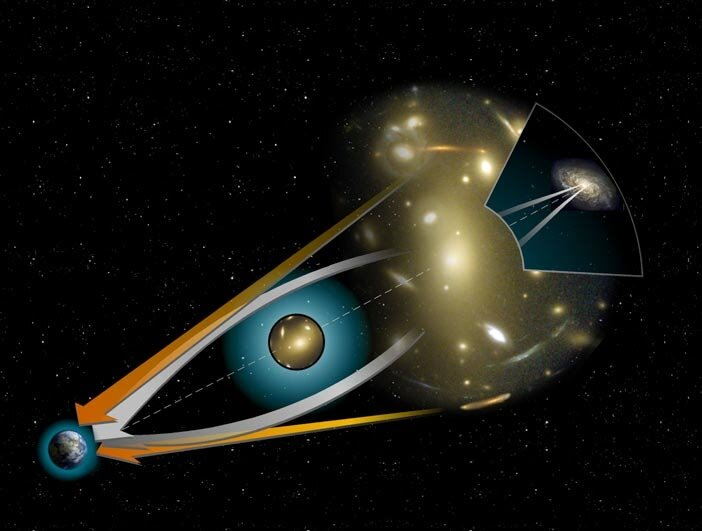
Similarly, light emitted by a distant quasar can be bent as it passes adjacent to a galaxy. This galaxy serves as a lens, bending light and generating multiple images of the quasar. When positioned just right, this can yield four images, though not entirely distinct, collectively referred to as the Einstein Cross.
Gravitational Lensing in Action
The phenomenon of gravitational lensing was first documented in 1987 by researchers at the Massachusetts Institute of Technology. Since that time, astronomers have discovered hundreds of such instances.
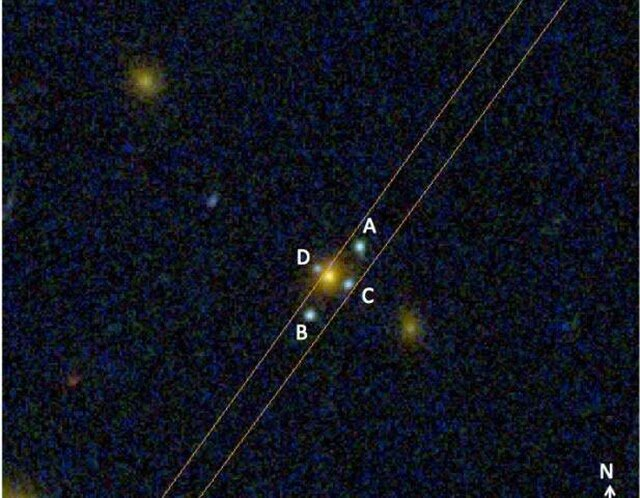
A New Instance of the Einstein Cross—J2211–3050
In 2014, the Hubble Space Telescope captured another instance of this phenomenon—the flash from the Refsdal supernova. Scientists had predicted its return, and in 2015, it reappeared in a different region of the galaxy. By March 2019, an Italian research team utilizing spectroscopy confirmed that the object designated J2211–3050 also represents an Einstein Cross.
To clarify, the term "Einstein Cross" does not apply to all such occurrences; it specifically refers to the quasar Q2237+0305 situated in the Pegasus constellation. Observing this cross through a telescope can be quite challenging, as its apparent stellar magnitude is merely 16.78, necessitating a telescope with an aperture exceeding half a meter for visibility.
Exploring Einstein's Cross (galaxy + quasar) in Pegasus Constellation, this video delves into the intricacies of this fascinating phenomenon.
This video discusses the Einstein Cross Gravitational Lens, shedding light on how this phenomenon operates and its significance in astronomical studies.
In conclusion, if you wish to keep abreast of more fascinating articles about space, feel free to subscribe to our channel and pose your questions, which I'll address in future articles. If you appreciate my work, you can support me by becoming a Medium member for just $5 a month, helping us create even better content.